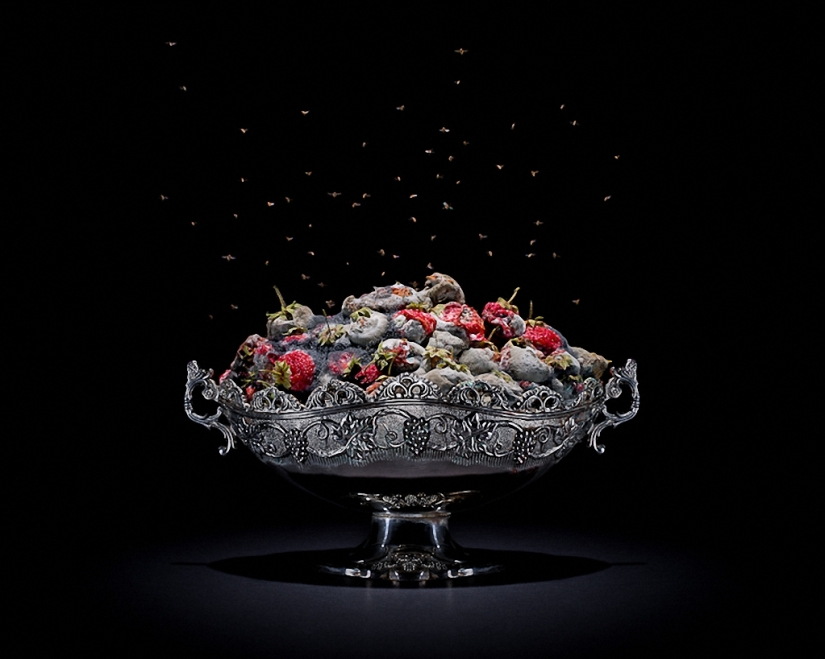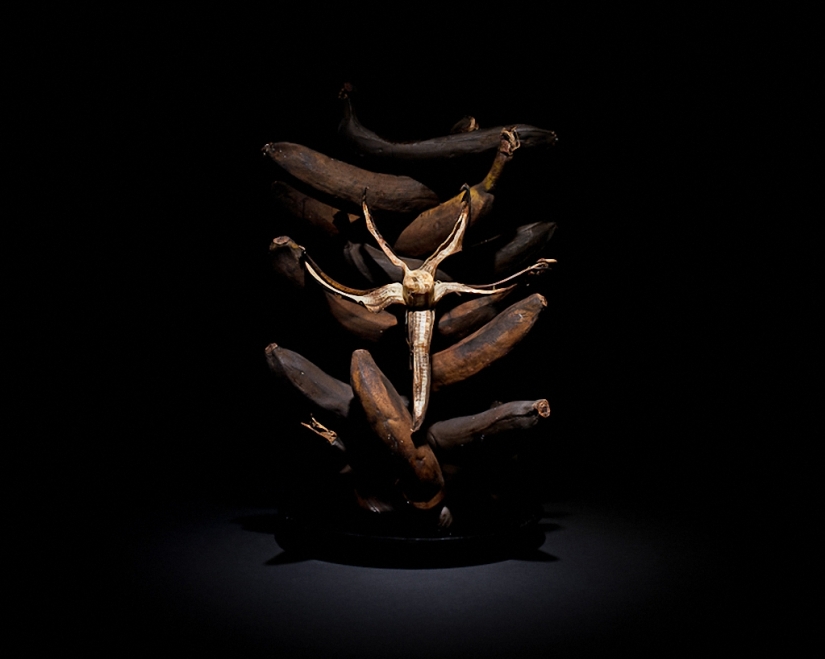Sickeningly beautiful rotten food

1. The photo project is called "One Third" - that's how much food produced around the world is thrown away. And in wealthier countries like the US, about 40 percent of the food, which is worth an estimated $165 billion, ends up in trash cans. In the photo: rotten strawberries. (Photo: Klaus Pichler).

2. An Austrian photographer studied rotting food in detail for nine months to create a laboratory of rotting food in his bathroom: a decomposing chicken, moldy noodles, etc. Photo: chicken. (Photo: Klaus Pichler).

3. And then what he managed to grow in his home "rotting lab", Klaus photographed as luxury items, which in a world where people are starving, they really are. Photo: bananas. (Photo: Klaus Pichler).
4. “I decided to make food look like the expensive ones we see in ads, because food is really a luxury, especially when you compare the situation with the availability of food in our industrialized part of the world with underdeveloped countries,” Klaus Pichler explains the idea of \u200b\u200bcreating photo project "One third". Photo: bread. (Photo: Klaus Pichler).
5. The photographer hopes that viewers will think twice before buying more products than they need after viewing this series of photographs. Photo: chili pepper. (Photo: Klaus Pichler).
6. The photographer used the effect of strong contrast between what the first impression these photographs create and how the audience feels when they finally understand what is actually depicted in them. Pictured: carrots. (Photo: Klaus Pichler).
7. On his website, under each photo, the author posted information about the price of this product, where and how it was grown, how many kilometers he had to travel to get into Klaus' refrigerator, how much carbon dioxide was released into the atmosphere as a result of its production and transportation, as well as how much water was used. He did this so that the photos were not just something abstract, but showed the real size of wasted resources. Photo: corn. (Photo: Klaus Pichler).
8. To find all the data that the photographer posted under the photos, he had to do almost a real investigation. The salespeople didn't want to give him that kind of information, so Klaus had to sneak to the back of the store where the goods were being unloaded to take pictures of the shipping labels on the crates, and then call the distributors, pretending to be a demanding customer who wants to know absolutely everything about the product. Photo: eggs. (Photo: Klaus Pichler).
9. In total, Klaus "rotted" and photographed 55 different foods, ranging from bread and milk to desserts. Pictured: lettuce. (Photo: Klaus Pichler).
10. After spending almost a year on a project dedicated to rotten food, the photographer, according to him, changed his attitude towards food. Now he buys food from local growers and organic farmers and doesn't throw it away anymore. In the photo: fruit cocktail. (Photo: Klaus Pichler).
11. Exhibitions of Klaus Pichler's photo project "One Third" were held throughout Europe, including at the UN. Photo: jelly. (Photo: Klaus Pichler).
12. Lemons. (Photo: Klaus Pichler).
13. Watermelon. (Photo: Klaus Pichler).
14. Milk. (Photo: Klaus Pichler).
15. Oranges. (Photo: Klaus Pichler).
16. Pineapple. (Photo: Klaus Pichler).
17. Potatoes. (Photo: Klaus Pichler).
18. Red cabbage. (Photo: Klaus Pichler).
19. Fig. (Photo: Klaus Pichler).
20. Tomatoes. (Photo: Klaus Pichler).
The rest of the rotten products from the One Third photo project can be viewed on the photographer's website: kpic.at.
Keywords: ROTTEN FOOD | FOOD | SPASTED FOOD | LUXURIOUS FOOD
